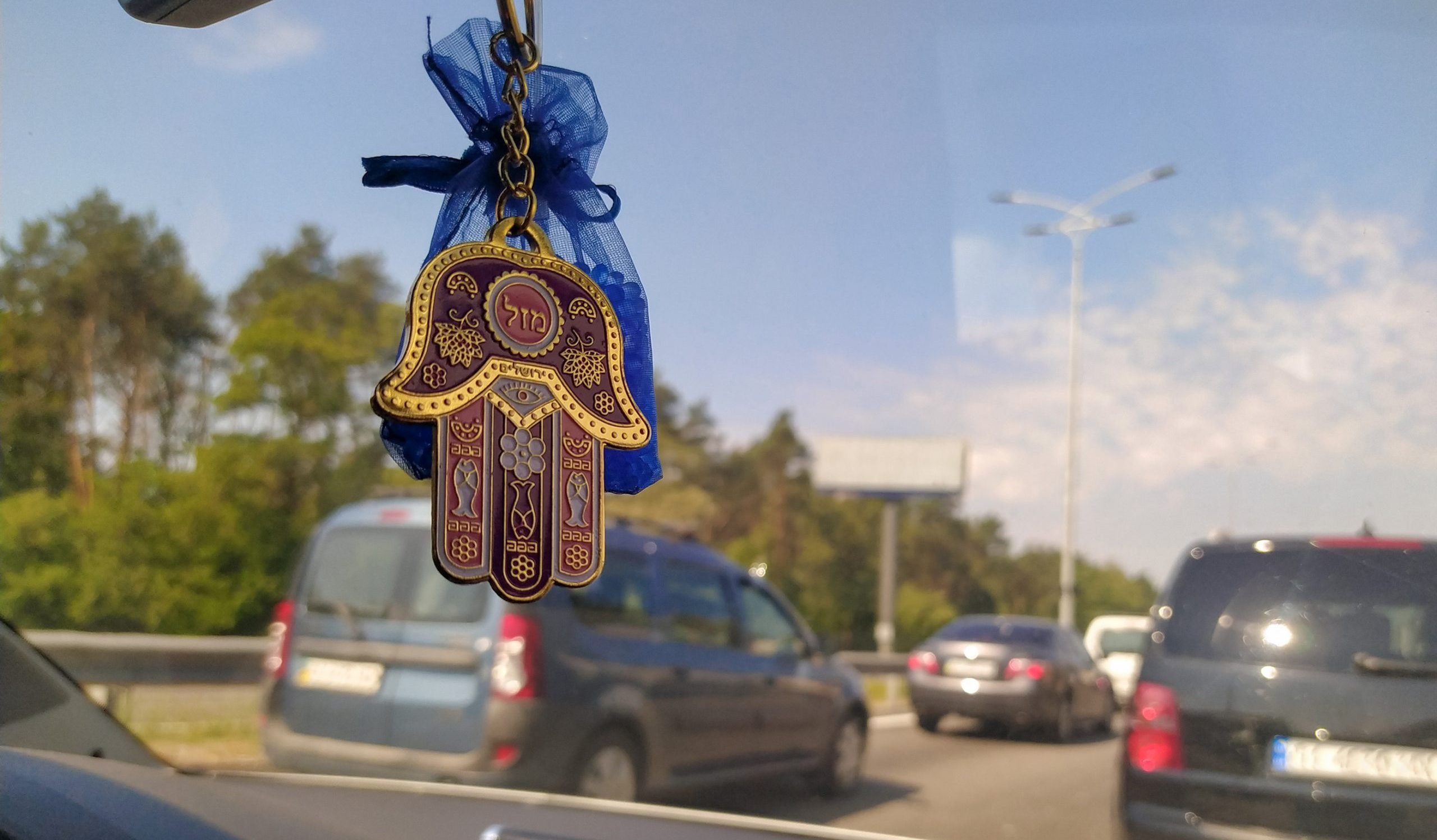
The Hamsa is one of the most popular Jewish and Middle Eastern symbols, often hung in homes or worn as an amulet on jewelry. But where does it come from and what does it mean? And what is its special meaning in Judaism?
The Hamsa is one of the oldest Jewish symbols; its imagery has been found on ancient Israelite tombs dating all the way back to the 8th century BCE!
Over time it became a common Middle Eastern and North African motif, often used by Sephardic Jews and adopted by non-Jewish traditions as well. It is also sometimes called the "Hand of Miriam" or the "Palm of David."
The Hamsa is depicted as an open right hand, often with an eye in the center of the palm and sometimes adorned with fish or other symbols of protection and luck. The hand can either be pointing up or down, fingers spread or close together, and many believe even the smallest of details have an impact in the Hamsa's protection.
The practice of specifically wearing or keeping a Hamsa amulet in one’s home for protection has been found all over the Middle East, North Africa, and Jewish communities in both Israel and the diaspora for centuries.

Hung in homes as an amulet till this day and worn as a talisman on necklaces and other jewelry, the Hamsa is a symbol of Divine protection and is Judaism’s most famous good-luck charm.
It’s believed to safeguard from negative energies and the Evil Eye, and to bring luck, happiness, success, fortune, and harmony.
In Judaism, some people also connect the Hamsa with the Exodus from Egypt, as it says that "God took Israel out of Egypt with a strong hand and an outstretched arm." Some Jews also view the five fingers of the Hamsa as a reminder to serve God with all five senses.
The Hamsa is often used in kabbalah and Jewish mysticism, as a symbol of holiness and Creation, with the power to neutralize negative energies and forces as well as protect from unseen dangers.

Today, the most popular way to connect to the timeless protective powers of the Hamsa is as part of a stylish jewelry design or displayed in the home as a beautiful decorative element, continuing its long history of bringing good luck and happiness. It's also often used as a protective travel amulet, featuring on keychains and car hangings.
The Hamsa is one of the most popular symbols used by Israeli artists on Jewish jewelry, wall hangings, and other art. It’s also often combined with the traditional home blessing, for an additional protective motif.
A beautiful Hamsa from Israel makes for a special gift or memento with a unique connection to a long history and spiritual meaning like no other!
Don't forget to check out our full collection of Hamsa jewelry and home decor from talented Israeli artists, as well as the 15 best Hamsa jewelry for everyone on your gift list!


Owned by JWG Ltd, maintains its offices and warehouse in Jerusalem, Israel. © 1999-2022 JWG Judaica and Dead Sea Cosmetics